Compiled by Paul Middents
Howard model numbers are referred to frequently in any discussion of
American tower clocks.
There is an unwarranted assumption that they may
mean the same thing to all the participants.
Howard was notably cagy about assigning model numbers to catalog illustrations or providing any
dimensions for the movements.
This was probably an attempt to protect proprietary design information.
This paper is an attempt to bring some
clarity to Howard model identification. 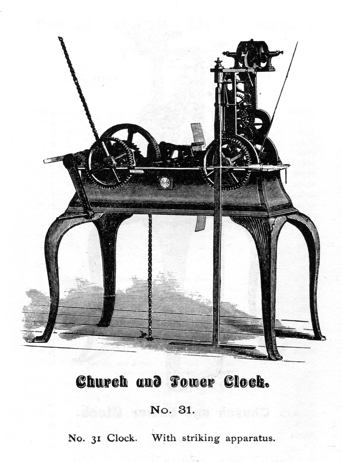 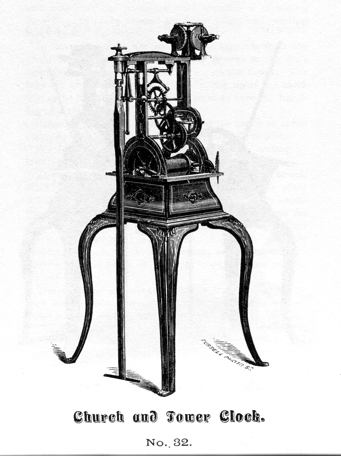 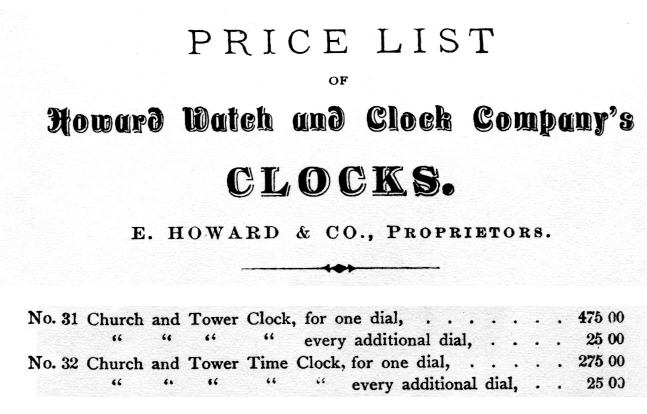 Frederick Shelley describes Howard's first two models, EH 1 and EH 2. The only occasion when Howard assigned model numbers to a catalog illustration occurred in an 1874 catalog which pictures a Model 31 striker and a Model 32 timepiece and lists their prices. These early clocks had applied cast leaves at the top of the cabriole legs. Howard's tower clock records survive in two volumes covering the period 1888-1905. The first volume contains a summary list for yearly sales by model number. The entries are not entirely obvious but a comparison of the table with individual listings and the price list from a pre-1900 catalog supports the following possible models: No. 0 Time Piece No. 0 Striker No. 0 Quarter striker (Typically ding dong) No. 0 Westminster chime No. 0 Special Time Piece (No. 0 Time Piece configured for a street clock) No. 0 Special Time Piece (Round top frames without a strike train) No. 1 Time Piece No. 1 Striker No. 1 Quarter Striker No. 1 Westminster Chimer No. 1 Special Time Piece (Round top frames) No. 1 Special Striker (Round top frames) No. 2 Time Piece No. 2 Striker No. 2 Quarter striker No. 2 Special Time Piece (Round top frames without a strike train) No. 2 Special Striker (Round top frames) No. 3 Time Piece No. 3 Striker No. 3 Quarter Striker No. 3 Westminster Chimer No. 3 Special striker (Probably round top frames. Only one example 1888-1905) No. 4 Time Piece No. 4 Striker No. 4 Quarter Striker Most of the post clocks were fitted with what we now commonly call a "00" time piece movement. Howard never references this movement and just calls it a "Timepiece" in the catalogs. |
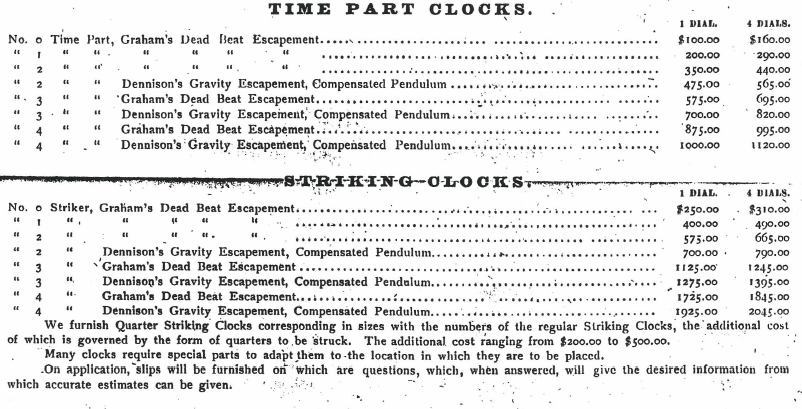 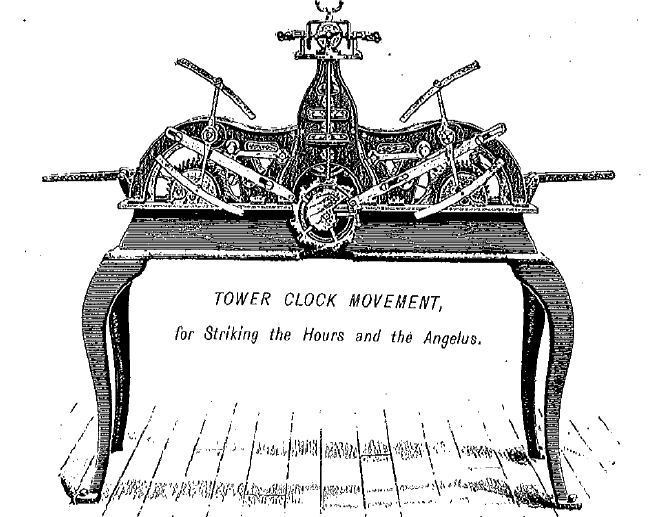 An 1887 catalog implies the illustration below is similar to the clock installed in St. Peter and Paul Cathedral, Providence, RI in 1889. If so it would be a No. 3 striker with Angelus attachment. However, this clock appears too small to be a No. 3. This is probably a No 0 striker set up with the Angelus train. Angelus bells sound an invitation to prayer established by Pope John XXII in 1526. They ring at 6 AM, noon and 6 PM; three strokes, three times in succession with a pause and then nine strokes. The models are grouped in five basic categories; 0, 1, 2, 3 and 4. Each model could include options for striking, escapement, pendulum temperature compensation and illumination regulation. The earliest catalog in the NAWCC library picturing a full range of Howard tower clocks is ca 1892. This is based on the 383 Washington St. address which implies pre 1900. The introduction refers to 50 years experience so that would make it 1892. The following illustrations are all taken from that catalog. 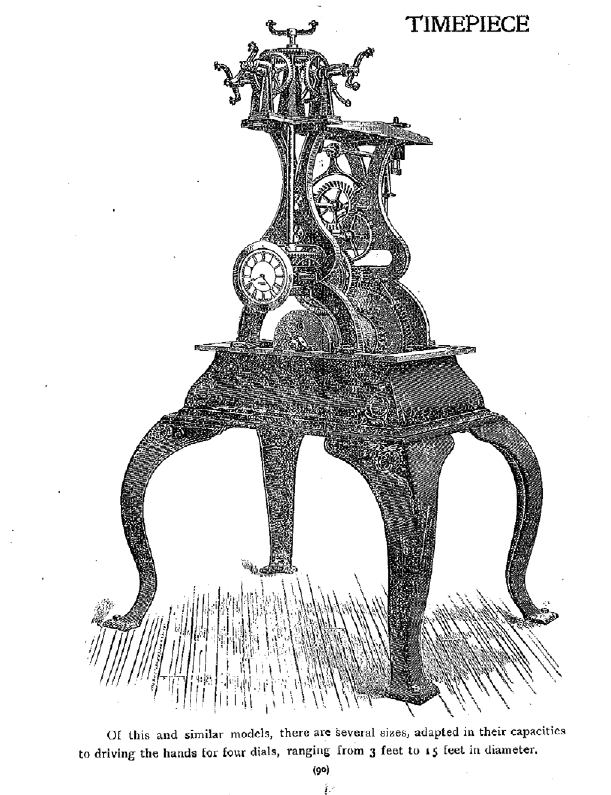 From the 1892 catalog. Models No. 1, 2 and 3 could take this form. Model No. 1 typically had a one second pendulum and Nos. 2 and 3 had 1.5 second pendulums. 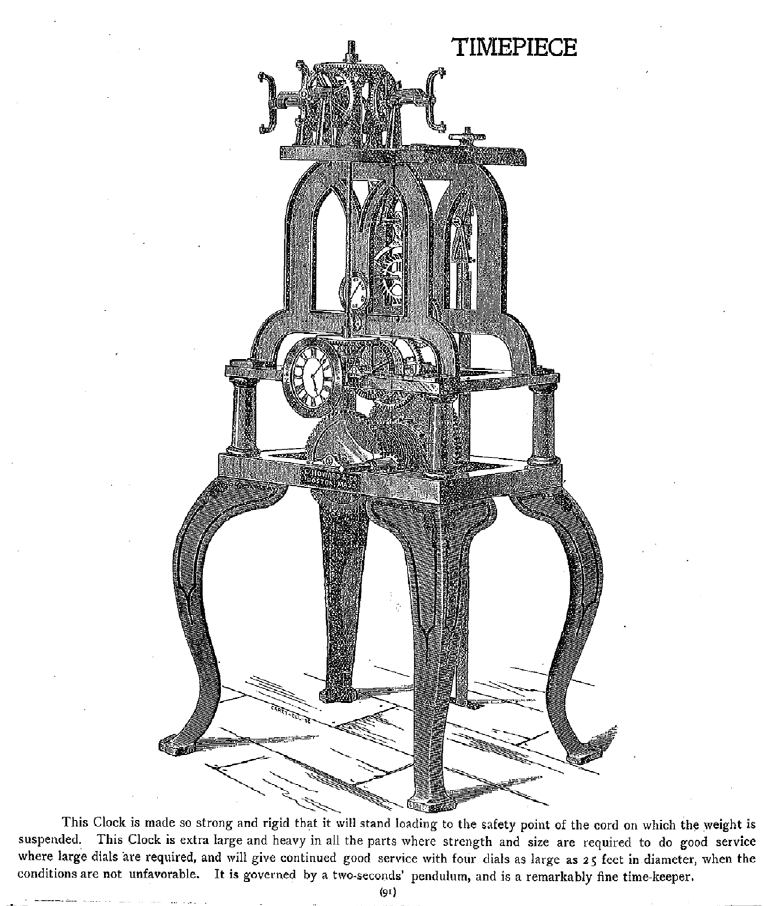 From the 1892 catalog. This is a No. 4 Timepiece. Note that the catalog entry says it is governed by a two second pendulum. 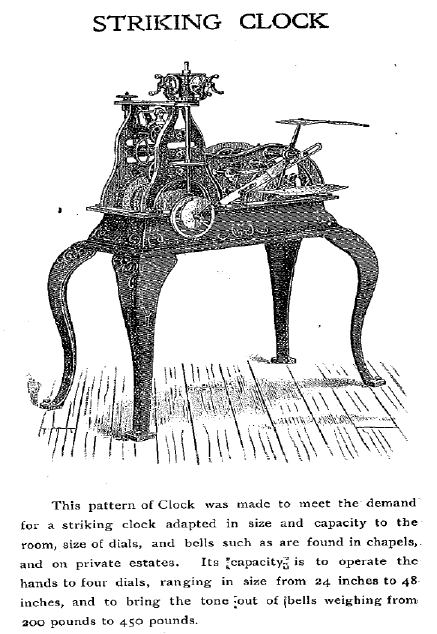 From the 1892 catalog. This is a Model No. 0 striker. 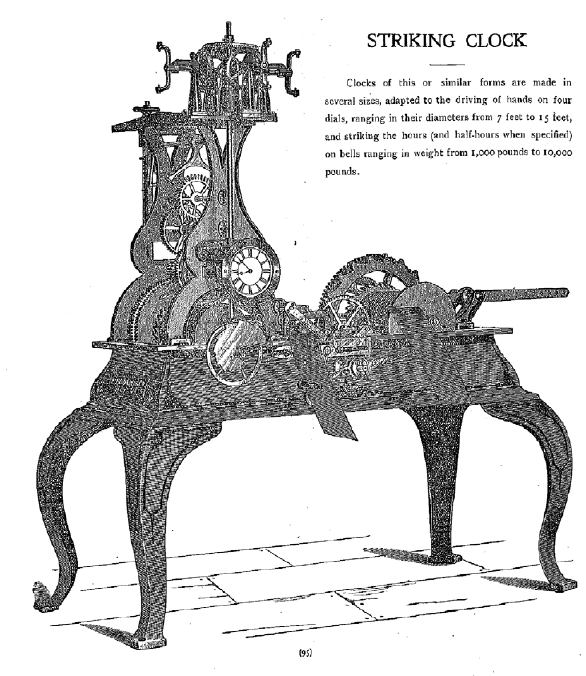 From the 1892 catalog. This could be a No. 1, No. 2 or No. 3 striker. 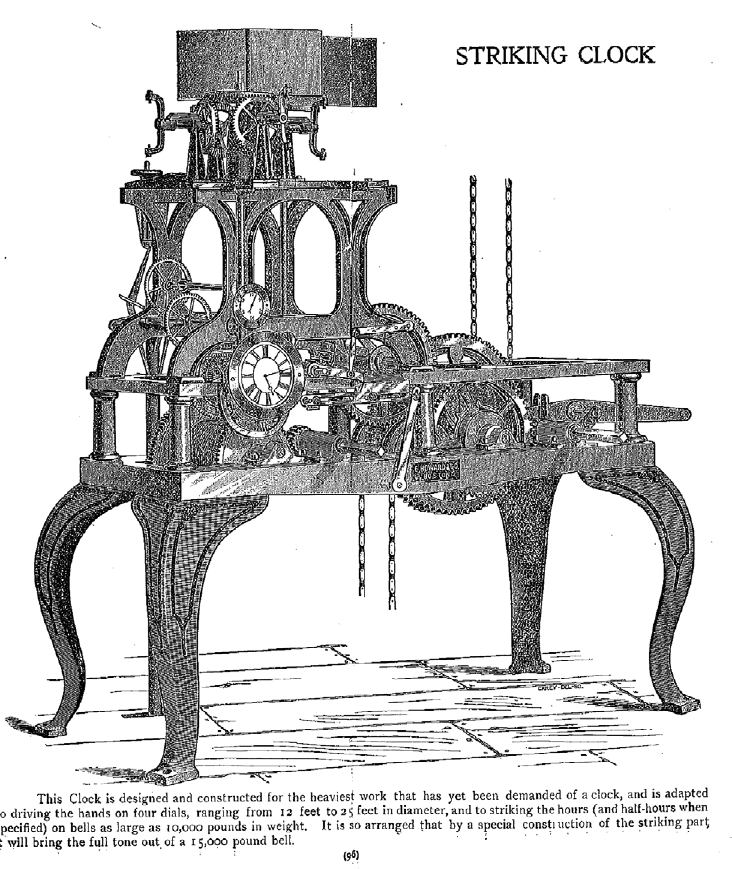 From the 1892 catalog. This is a No. 4 striker. 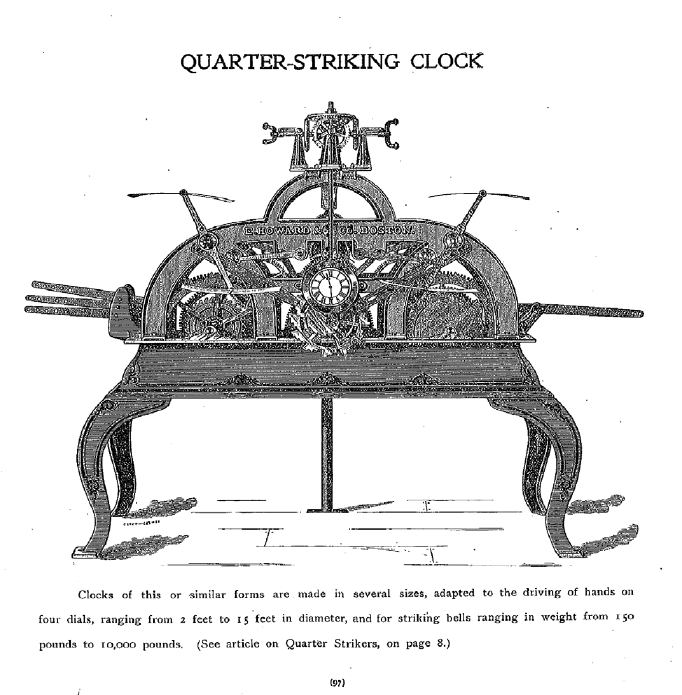 From the 1892 catalog. This is a No. 3 quarter striker. 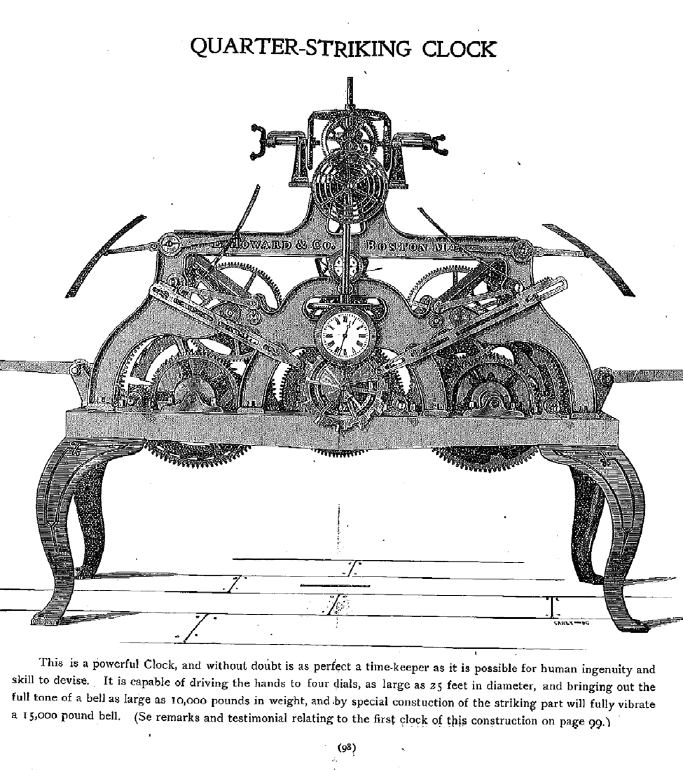 From the 1892 catalog. This is a No. 4 quarter striker. 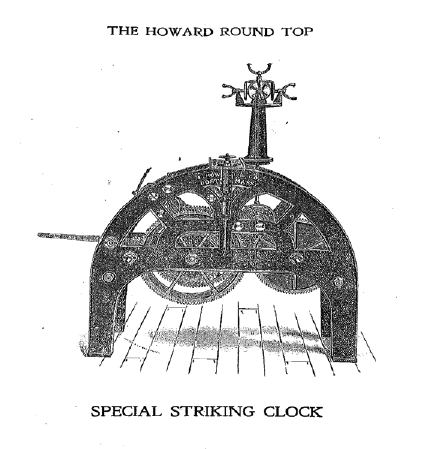 From the 1892 catalog: These models, commonly referred to as "hump backs", appeared in both the 1890 and 1892 catalogs. Some versions of the round top clocks may have been made without strike trains. 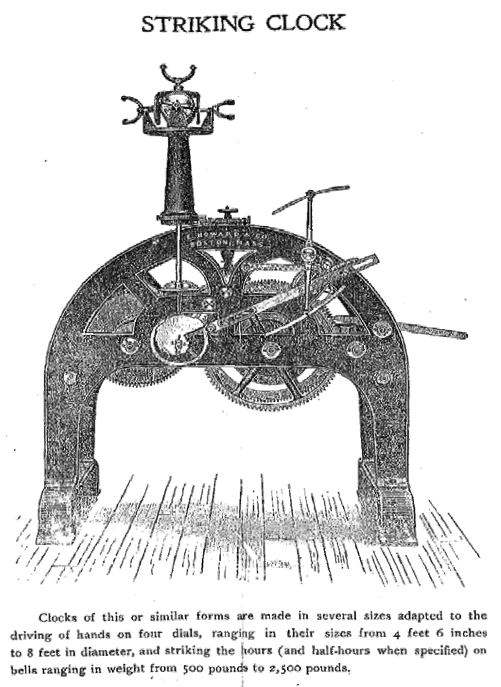 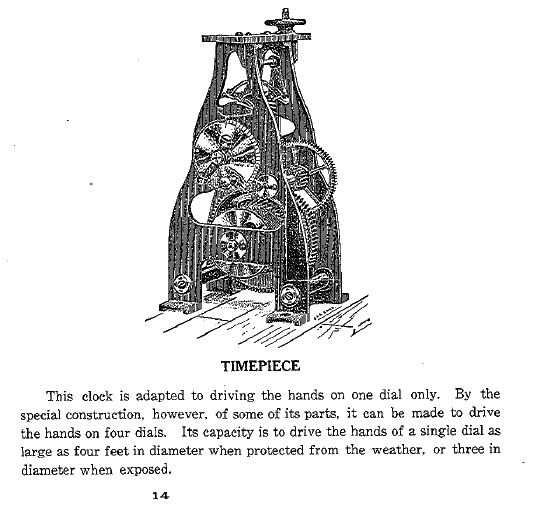
The next catalog in the NAWCC Library with tower clocks is ca. 1912. The date is based on the company address and several Washington State installations reliably dated to 1909-1911. From the ca 1912 catalog. This is the first catalog appearance of what we now commonly refer to as the "00" model. Howard makes no reference to this number. This movement was used by Joseph Mayer in his first two-dial street clocks. 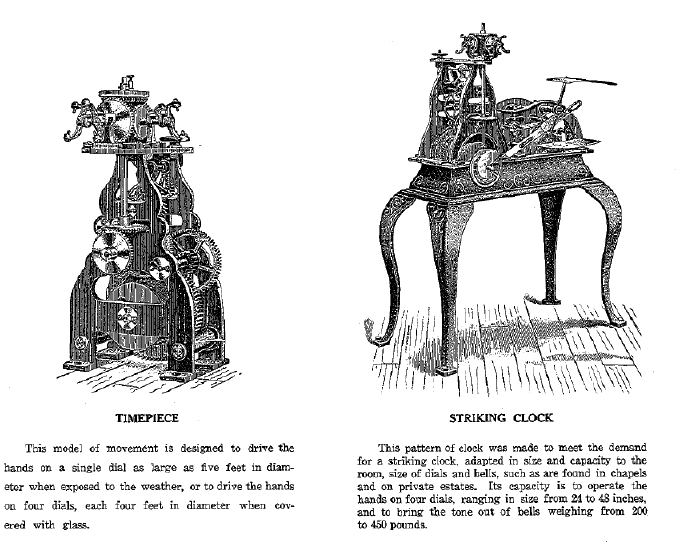 From the ca. 1912 catalog. This is the first appearance of what is commonly referred to now as the Model No. 0 timepiece movement. Joseph Mayer used this movement in his large four dial street clocks. The Model No. 0 striker was also pictured in the 1892 catalog. The time train frames on the striker are not the same shape as those on the timepiece. There are only four arbors in the striker timepiece train compared to five in the Model No. 0 Timepiece. 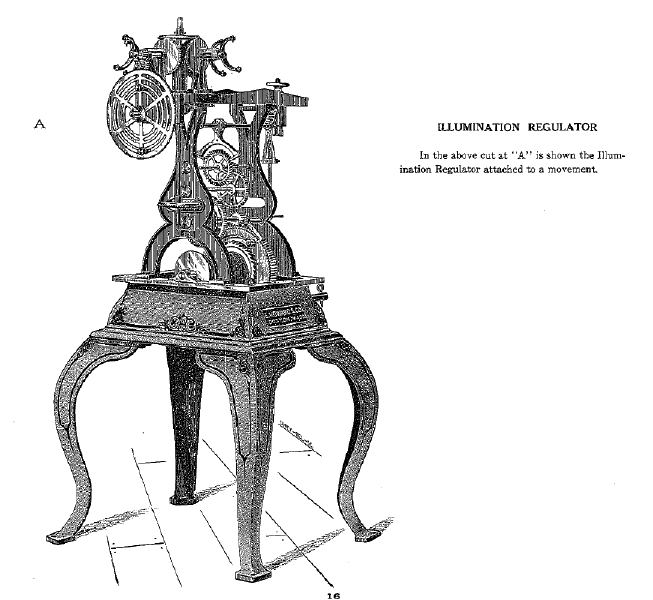
From the ca 1912 catalog. The illumination regulator on a Model No. 1 or No. 2 timepiece movement . All other illustrations in the 1912 catalog are the same as in the 1892 edition. 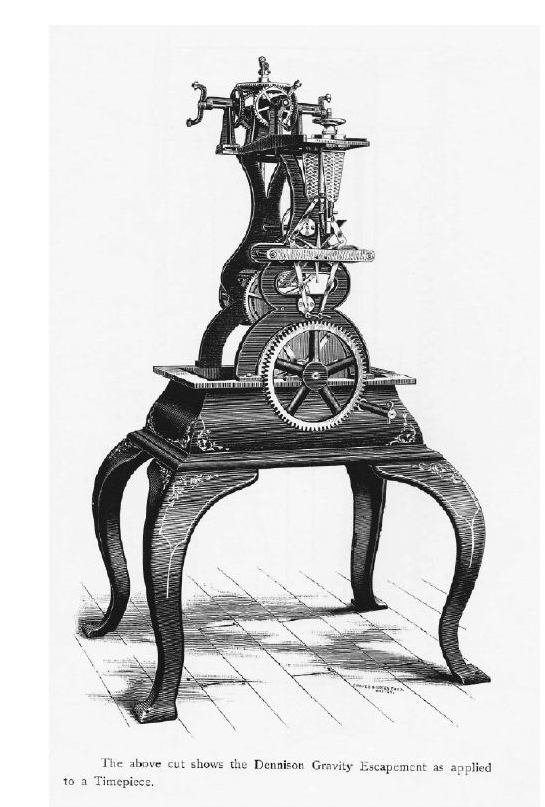 A Tran Du Ly reprint of a ca 1923 catalog includes engravings from a ca. 1890 catalog of all the movements illustrated in the 1892 and 1912 catalogs plus the Denison gravity escapement pictured on what could be a Model No. 1 or No. 2 timepiece. Joseph Mayer installed several No. 2 timepiece and striker models with Denison gravity escapements and 1.5 second zinc and steel temperature compensated pendulums. Note that the Howard catalog consistently misspells Denison as "Dennison". 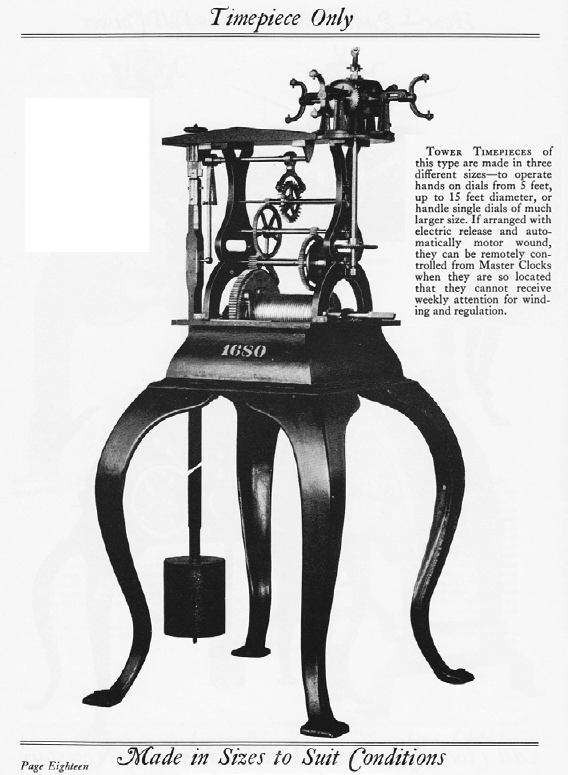 A 1923 catalog pictures a Model No. 1 timepiece sold to the Boston West End Street Railway Co. in 1894. Note the one second pendulum. 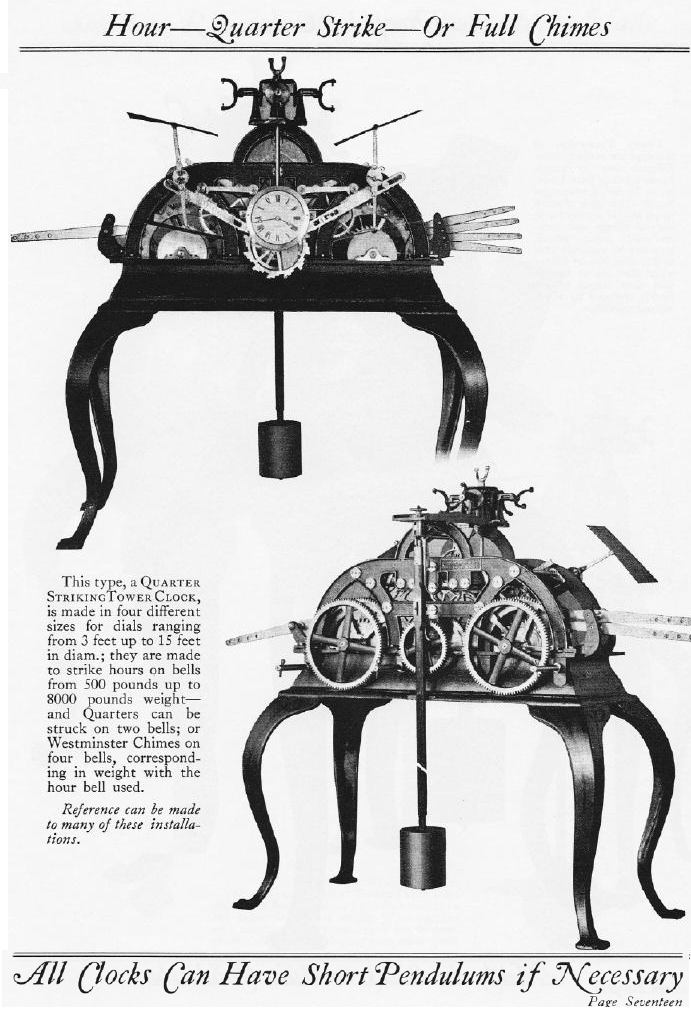 From the ca 1912 catalog. I think we have a Model No. 3 striker illustrating that all models can be equipped with a one second pendulum. 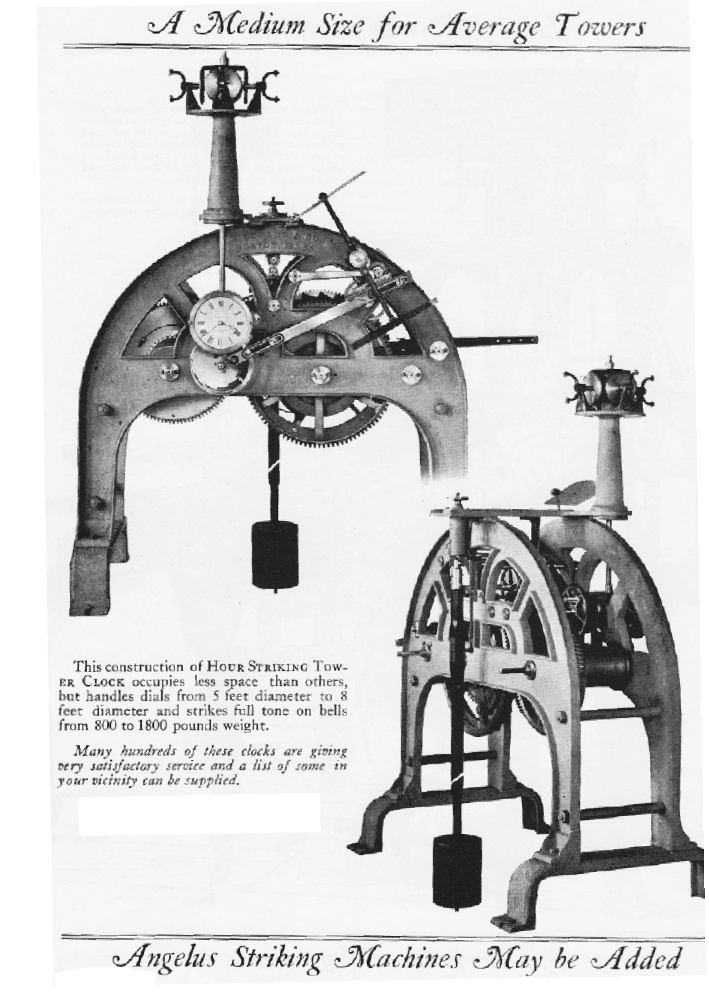 1923 catalog illustration of what I think Howard would call a Special striker, possibly a No. 1 Special. 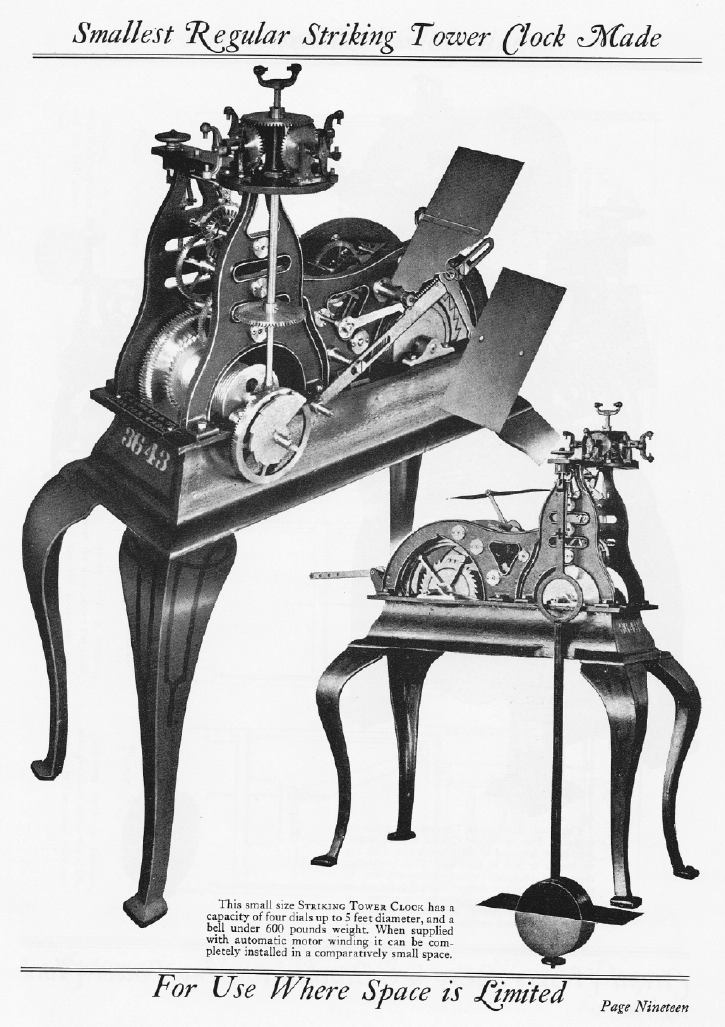
From the ca 1923 catalog. This is a Model No. 0 striker. Note ribbed casting for the frames. The serial number seems very high for ca. 1923. I would put it post 1930. 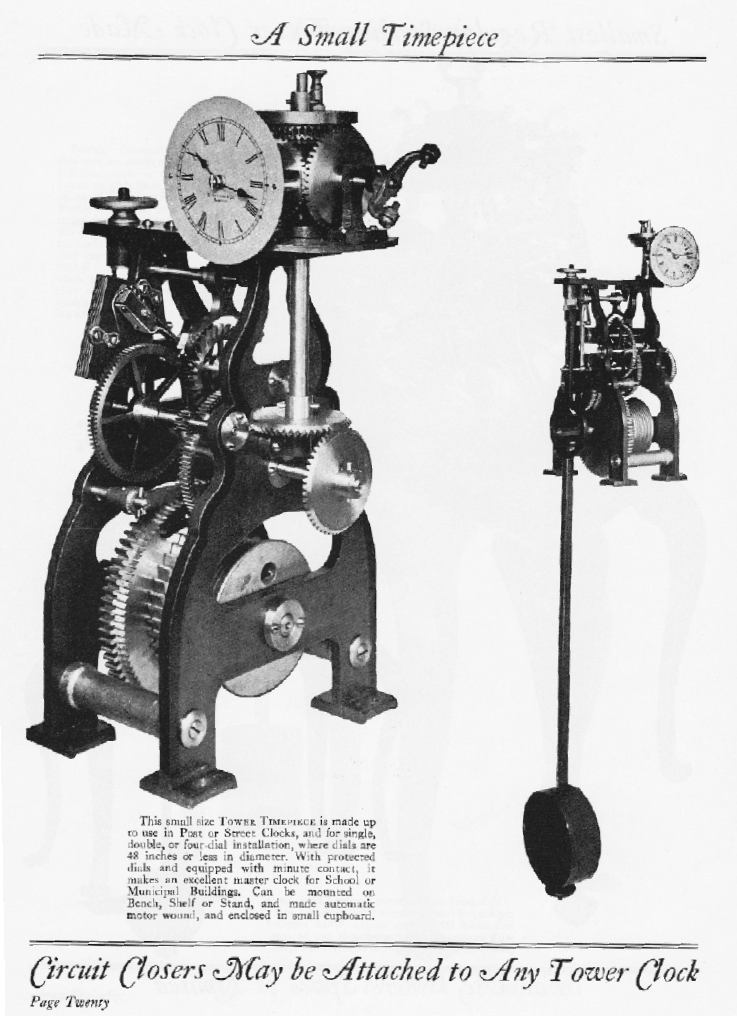
From the ca 1923 catalog. This is the first appearance in a catalog of what I term a four arbor version of the Model No. 0 timepiece. Note that the frames are flat and the shape differs from the Model No. 0 striker. The top piece of the two clocks appears similar. 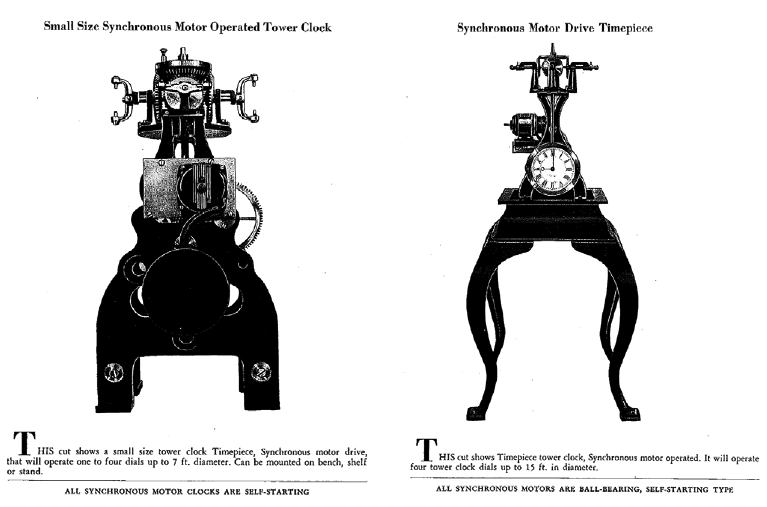 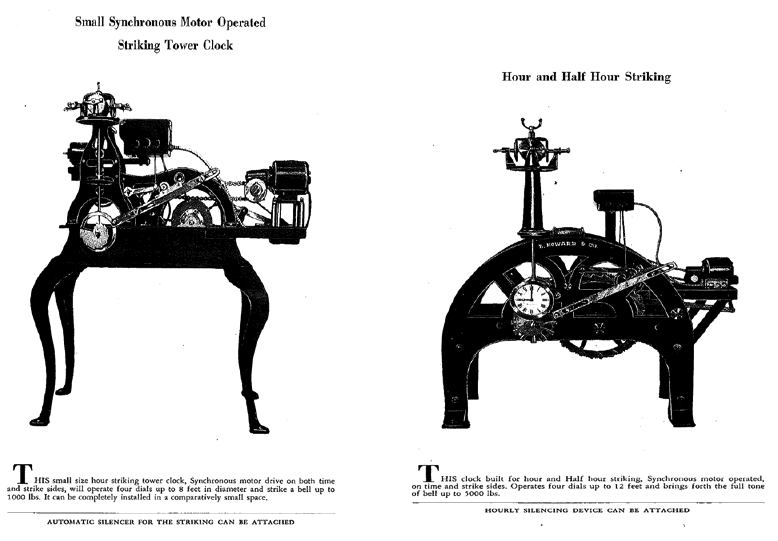 A ca. 1940 catalog shows various models with synchronous AC motor modifications. Above No. 0 and No. 1 timepieces and below a No. 0 striker and a round top special. 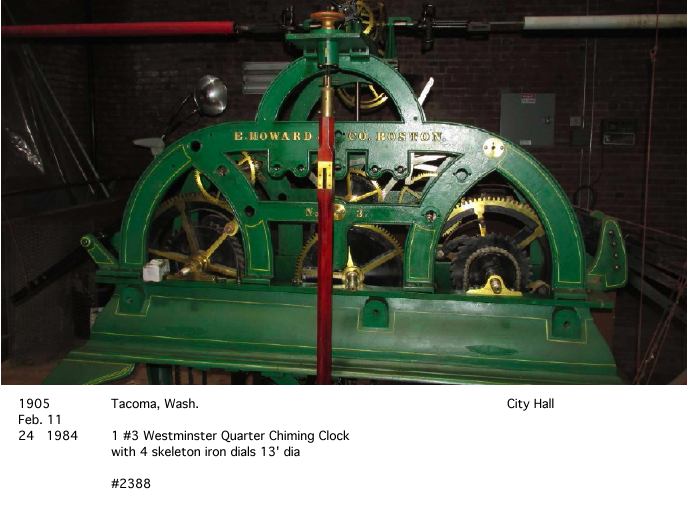
This is the Old Tacoma City Hall clock, unfortunately vandalized some years ago for brass. Howard has cast into both sides "No. 3". The clock was purchased Feb. 11, 1905. Serial No. 2388. The clock has a 1.5 second pendulum. 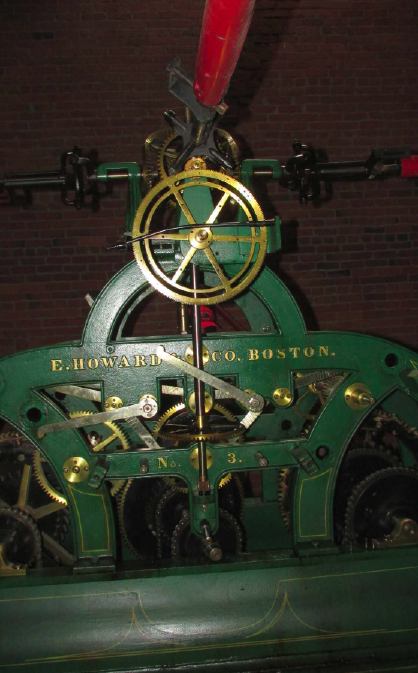 Howard has cast into both sides "No. 3". The Old Tacoma City Hall clock showing the illumination regulator. The clock as installed in 1905 was a manual wind and probably required winding several times a week. Joseph Mayer added his patent winding sytem to the clock in 1912.  This is the Jefferson County Courthouse clock installed in Port Townsend in 1892. The Howard order book calls it a No. 3. I have not visited this clock yet. I think this has a 2 second pendulum. Photos courtesy of Archie Bacon 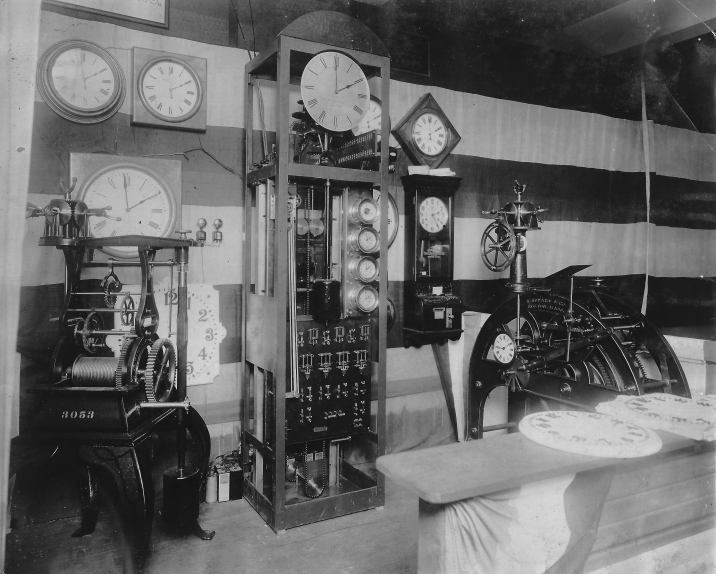 Photo courtesy of Don Bugh This remarkable picture from the Howard archives shows a Joseph Mayer/Howard display at a Seattle Industrial exposition in 1911 or early 1912. A No. 1 time piece on the left probably found its way to the Bonney Watson Funeral Home in Seattle. The master clock was destined for Franklin High School. It contains the four arbor version of a Model 0 movement with gravity escapement and zinc and steel compensated pendulum. Two of these clocks survive. The striking tower clock movement on the right would probably have been called a No. 1 Special Striker with illumination regulator. Its fate is unknown. |
Return to Early American Tower Clocks.
Compare Donn's original version of this page if it still exists.
To comment on this page, please